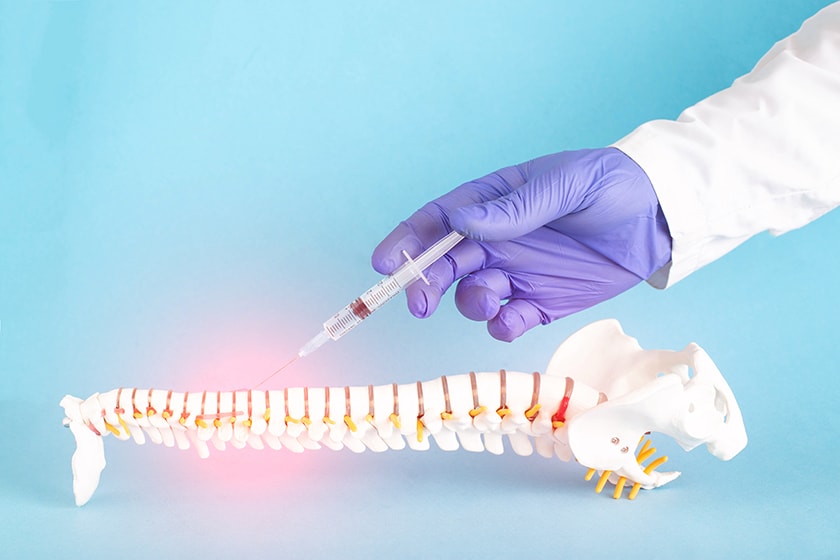Archaeological evidence suggests that humanity have been attempting to relieve pain and alleviate suffering using a variety of approaches for thousands of years. Pain injections, often known as "pain interventional techniques," are one way now utilised to alleviate pain. However, selecting the proper injection for the right circumstance is critical.
In this blog, I will describe why a pain specialist would recommend an injection, what a pain injection is, examples of pain injections, and how a pain specialist can help you with your pain.
What are the benefits of pain injections?
1. To make a diagnosis - “diagnostic injection”
Despite a comprehensive examination and several tests and scans, determining the exact reason of your discomfort may be challenging. By injecting local anaesthetics and other medications around specific parts in the body, we can identify the main pain generator and then provide you with a more definite treatment. Let's have a look at an example.
John is a 57-year-old carpenter who owns his own company. He began experiencing back pain six months ago and is now experiencing pain in his right knee. A spine surgeon examined John and diagnosed him with facet joint arthritis in his lower back, a nerve impingement in the spine, and right knee arthritis. The surgeon decided that any of these disorders could be the source of John's pain, but it was unclear which one was the primary reason. The spinal surgeon referred John to a pain specialist, who used pain injections to diagnose his condition. The facet joints were injected initially. John's back pain improved, but his right leg pain persisted. The pain specialists used injections to target the impinged nerve in the spine. For a few days, John experienced incredible pain relief, confirming that his suffering was mostly caused by the impinged nerve. John returned to the spinal surgeon to have his treatment. This is an example of how a pain injection can aid in determining the root cause of pain and tailoring future treatments accordingly.
2. To offer long-term pain relief - "therapeutic injection"
Long-term pain relief can be accomplished by precisely delivering drugs and performing special injection techniques to the location generating pain. For example, a rhizotomy injection for facet joints may provide pain relief up to 12 months. Not only would the discomfort be alleviated, but patients would be able to discontinue their strong pain medications, increase their function by working with their physiotherapist, and have a better quality of life.
3. To provide immediate pain relief
Most of the time, sudden pain (acute pain) or aggravated chronic pain (acute on chronic pain) resolves on its own. However, occasionally the pain is so severe that patients are unable to function, go to work, or participate in physiotherapy, and they may require a large number of pain killers at the expense of side effects. In these cases, an injection can occasionally aid patients by relieving discomfort and giving the body ample time to heal itself.
What is a pain injection and what types are available?
Pain injections are medical procedures that include injecting drugs or performing treatments into particular parts of the body in order to diagnose the source of your pain or give pain relief. Local anaesthetics and cortisone (steroids) are two drugs commonly used in pain injections. Other medications that a pain specialist can give you with your injections include clonidine, anti-wrinkle drugs, specifically developed solutions that simulate lubricating joint fluid, and others.
Different types of pain injections
The following are examples of commonly performed injections:
1. Injections into the facet joints
This is an injection used to relieve pain in the spine caused by arthritis in the facet joints. While pain alleviation can last for several months, it is frequently only temporary.
2. Rhizotomy
This is a specific treatment that may provide long-term pain relief depending on the underlying issue. This procedure is frequently used to treat facet arthritis-related spine pain. Rhizotomy can be used in a variety of ways, and it can also be used in other regions of the body.
3. Nerve root sleeve injection
The goal of this injection is to target the base of a nerve exiting the spine and inject drugs near to the nerve to relieve pain, similar to sciatica.
4. Epidural injection
This is an injection designed to place medication in the epidural area of the spine, close to the nerve or a bulged disc. Depending on the underlying condition, there are several techniques to administer an epidural injection.
5. Injections into the joints
Cortisone is injected into the arthritic joint to relieve inflammation and pain. Examples include the sacroiliac joint, knee, ankle, and shoulder joints.
6. Headache and migraine injections
Depending on the reason of your headache, rhizotomy, cortisone, or anti-wrinkle drugs can help relieve it.
There are many other injections that pain specialists can offer according to your condition. Some of other conditions are; post hernia repair pain, shingles, persistent pain after knee replacement surgery and many other conditions.
To summarise, pain is an unpleasant sensation that can affect every aspect of your life. Chronic pain management is complicated, and there are numerous therapeutic options available before resorting to an injection. A pain specialist would thoroughly assess you, and depending on your condition and a variety of other circumstances, an injection may be recommended as part of a multidisciplinary management strategy. Remember that pain injections are invasive treatments with associated risks, just like any other medical procedure. Not everyone requires or is suitable for pain injections, and I strongly advise you to consider all options with your pain specialists before deciding on one.


